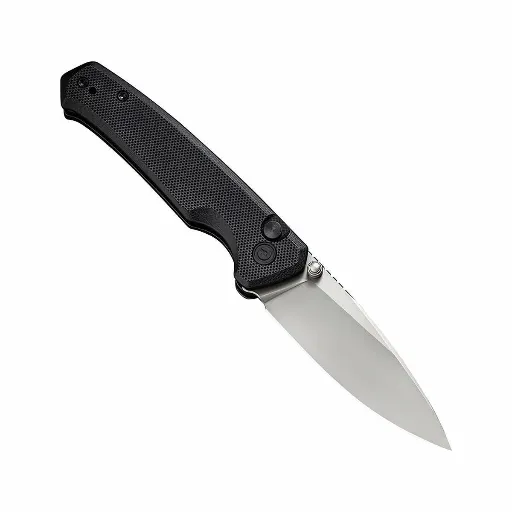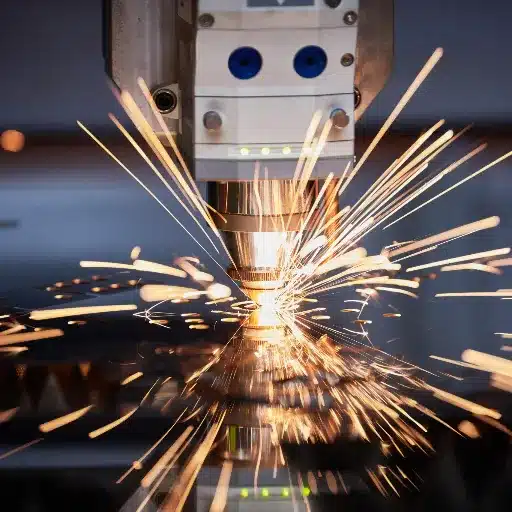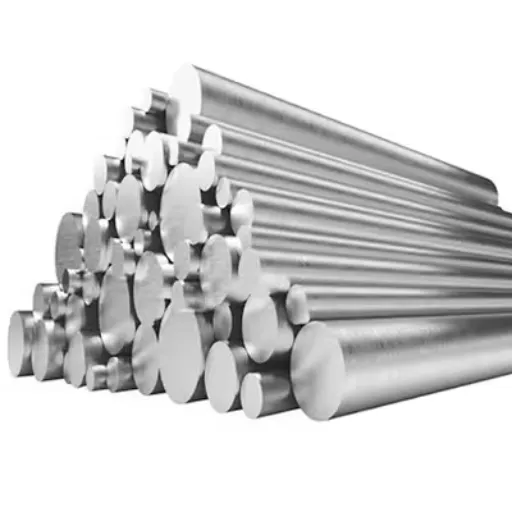Various industries rely heavily on 316L stainless steel strips because of their durability, versatility, and exceptional corrosion resistance. The purpose of this blog post is to focus on the manufacturing processes of stainless steel strips, starting from understanding the properties of premium-grade materials to knowing the key manufacturers in the industry. We will explore the common uses of such strips across industries and study the pointers that define a good supplier. By the end of the article, readers will have an in-depth understanding of the numerous manufacturers that produce 316L stainless steel strips and key insights that will help them choose the right supplier for the material.
What Makes 316L Stainless Steel Strips Unique?
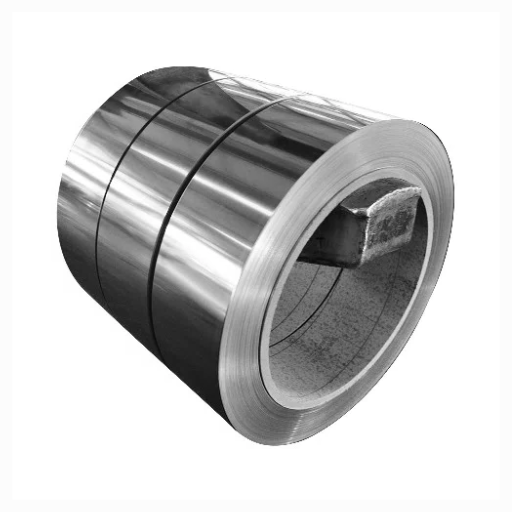
Strips of 316L stainless steel are recognized for their durability and versatility, but their formability is unsurpassed. Marine and medical industries, along with chemical processors, consider these strips to be more practical when compared to other materials. Moreover, 316L steel strips have unrivaled corrosion resistance when put against harsh chemical, saltwater, or extreme temperature environments. These strips are known for their exceptional durability because of the added molybdenum, which aids in the prevention of pitting and crevice corrosion, making them perfect for tough requirements. The low carbon content of these strips also ensures that carbide does not precipitate during the welding process, thus retaining the integrity of the material.
Understanding 316L Stainless Steel Properties
316L stainless steel is a low-carbon version of 316 stainless steel, which increases its resistance to corrosion in high chloride or marine environments. Molybdenum further increases its ability to resist pitting and crevice corrosion, which is ideal for more strenuous applications. The lower carbon content also helps during welding because it minimizes carbide precipitation, which strengthens and retains the structure of the material. In addition, 316L stainless steel is known for its toughness, durability, high formability, versatility, and ease of processing. This makes it the material of choice for industries such as marine construction, medical equipment, and industrial chemical processes.
The Role of Molybdenum in Corrosion Resistance
Pitting and crevice corrosion are more severe in seawater or seawater industrial processing systems. Molybdenum enhances the corrosion resistance of 316L stainless steel. Adding molybdenum to the alloy improves its strength to resist pitting and crevice corrosion in chlorine rich areas. Additionally, it increases the pitting resistance equivalent (PRE) value of the steel. In 316L stainless steel, the PRE value is usually between 23 and 28 which is a considerable increase relative to lower-grade stainless steel.
The effectiveness of molybdenum in 316L is defined by its content which is between 2 and 3% per usual. This composition provides adequate resistance of the material’s corrosion and mechanical functions. Furthermore, molybdenum plays a role in the stabilization of passive oxide layer on the steel surface, protecting it from aggressive chemicals like acid and salt and improving its endurance and life span in demanding conditions.
Comparison with Other Grades: 304 vs. 316L
The difference between 304 and 316L stainless steels lies predominantly in their molecular structures, which affects behavior in different settings. Both grades have iron, chromium (approximately 18-20%), and nickel (8-10.5%), but 316L has an additional 2-3% of molybdenum. This addition dramatically improves pitting and crevice corrosion resistance, especially in chloride-acid valleys which are prone to coastal and marine applications.
Corrosion Resistance:
- 304 Stainless Steel: Exhibits great types of corrosive potential but suffers from heavy pitting and stress corrosion cracking in chloride environments.
- 316L Stainless Steel: Suitable for highly abrasive conditions due to the added Molybdenum which helps counter pitting and crevice corrosion.
Mechanical Properties (at Room Temperature):
- 304 Stainless Steel:
- Tensile Strength: ~505 MPa (73,200 psi)
- Yield Strength: ~215 MPa (31,200 psi)
- Elongation at Break: ~70%
- 316L Stainless Steel:
- Tensile Strength: ~485 MPa (70,300 psi)
- Yield Strength: ~170 MPa (24,700 psi)
- Elongation at Break: ~50%
Weldability and Applications:
Both grades have shown greatly positive results in weldability. However, 316L is specially beneficial in welded constructions because of the carbon content which makes sure that carbide precipitation and intergranular corrosion due to welding is at the lowest possible level.
Cost Considerations:
As a result of more molybdenum content, 316L is usually 20-30% more expensive than 304. Nevertheless, it is reasonable in circumstances where increased corrosion resistance is required.
Key Applications:
- 304 Stainless Steel: Widely used in less corrosive and indoor settings such as kitchen appliances, automotive trim, and general industry.
- 316L Stainless Steel: Common in marine parts, chemical processing equipment, and surgical instruments where strength and resistance to corrosion are needed.
This in-depth analysis captures the relative advantages of each grade and assists the decision on which material to use in specific applications.
How are 316L Stainless Steel Strips Manufactured?
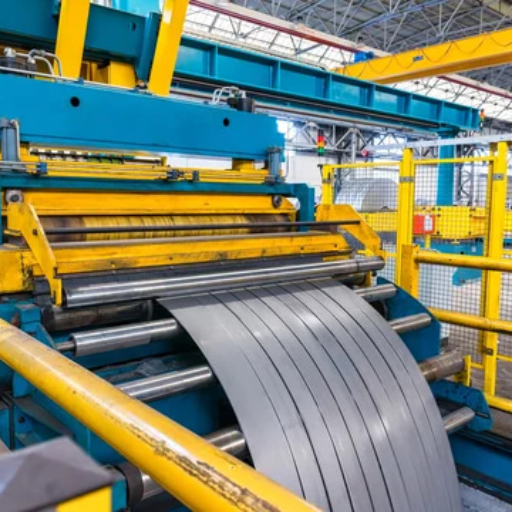
Some strategies undergo the manufacturing process of 316L stainless steel strip to achieve precision and quality. First, the basic materials include iron, chromium, nickel, and molybdenum. These components are melted in an electric arc furnace. After the melting, argon oxygen decarburization will increase the purity. Then, the slabs of steel are cast and undergo hot rolling to further reduce their thickness. After that, the remaining thickness and surface quality are achieved through cold rolling. Later in the process, the strips are pickled or polished to the required finish, cut to the appropriate size, and prepared for distribution. Before that, however, they undergo annealing to enhance their corrosion resistance and improve their mechanical properties.
The Cold Rolled Process Explained
The cold rolling process starts with pickled hot-rolled coils, which undergo cleaning to eliminate surface contaminants. These coils are then fed into rollers at ambient temperature for thinning and precision enhancement. In contrast to cold rolling, which occurs at elevated temperatures (hot rolling), material surface and dimensional qualities, as well as mechanical strength (hardness), are enhanced. Cold rolling sometimes requires multiple stages to reach the target thickness. The material is usually subjected to annealing after rolling to enhance ductility by reducing brittleness. The resulting cold-rolled steel exhibits smoother surfaces and tighter tolerances and is better for defending high-quality finish applications, such as appliance and automotive parts, construction, etc.
Exploring Hot Rolled Techniques
The hot rolled methods have the steel processed above its recrystallization temperature, typically hotter than 1,700°F. In this case, the steel is easier to shape and form. The advantages to this method include lower costs of production and the ability to create larger, more intricate shapes. Even so, the surface finish has less polish compared to cold-rolled steel. There is also less precision due to cooling shrinkage, contrary to the required margins. Regardless, hot-rolled steel is ideal for uses where surface finish isn’t important, such as construction beams, railroad tracks, and heavy machinery.
Why Annealing is Crucial in Manufacturing
The process of annealing is very important for industries that deal with the manufacturing of metals and alloys, as it increases their properties using heat. The aim of annealing includes relieving internal stresses, increasing machinability, enhancing ductility, and improving the microstructure of materials. The cycle of annealing includes heating a specimen to a required temperature, holding it at that temperature for some time, followed by controlled cooling.
Several important parameters define the process of annealing, such as:
- Temperature Limits:
- For carbon steel, the limits are between 1200°F and 1600°F (649 – 871).
- For stainless steel, the limit is around 1900°F (1038 °C), depending on the alloy.
- Holding Time:
The amount of time the specimen is kept at the required temperature depends on the thickness of the specimen and generally ranges from a few minutes to several hours.
- Cooling Rate:
Controlled or slow cooling in a furnace is necessary to avoid defects, though some materials can be cooled by an airstream or a water bath to achieve certain characteristics.
For the construction, automotive, and aerospace industries, annealing is of utmost importance regarding the efficacy of metals. It improves malleability and reduces brittleness, allowing the materials to be shaped and processed without fracturing. In addition, annealing improves the grain structure (the internal crystalline arrangement) of the metal, which can greatly improve the strength and consistency of the metal. This process guarantees that the metals satisfy the rigorous standards needed for contemporary manufacturing purposes.
What Standards Govern 316L Stainless Steel Strips?
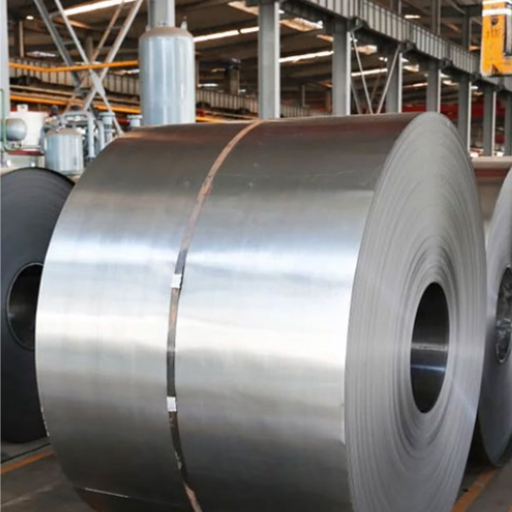
Several standards govern 316L stainless steel strips to verify that these qualities and performance are appropriate for industrial use. Key standards include ASTM A240, which provides specifications for chromium and chromium-nickel stainless steel plate, sheet, and strip for pressure vessels and general use. Alongside, the ISO 9445 standard addresses the tolerances and mechanical properties for strips of stainless steel. Maintaining such standards creates consistency and reliability suitable for critical construction, automotive, and aerospace industries.
Introduction to ASTM A240 and Its Importance
The importance of ASTM A240 lies in maintaining the quality and functionality of stainless steel materials for different uses. This standard defines the limits of chemical composition, along with the mechanical properties of chromium and chromium-nickel stainless steel plates, sheets, and strips. Furthermore, it assists manufacturers in meeting safety and performance standards for construction and pressure vessel fabrication. Compliance with this standard enables us to ensure accuracy, strength, and tempering without processing additional costs, thus vastly improving the production cost of stainless steel all over the world.
Understanding UNS S31603 Classification
Other than being referred to as 316L stainless steel, UNS S31603 is known to be a subvariant of the 316 stainless steel grade. This classification is widely accepted for possessing remarkable corrosion resistance, especially for environments with high chloride concentration or acidic conditions. The “L” infers that its carbon content is lower (generally ≤ 0.03%), which improves its sensitivity to welding and thus makes it ideal for welding applications.
Significant Technical Details of UNS S31603:
Chemical Composition:
- Chromium (Cr): 16.0% ≤ 18.0%
- Nickel (Ni): 10.0% ≤ 14.0%
- Molybdenum (Mo): 2.0% ≤ 3.0%
- Carbon (C): ≤0.03%
- Manganese (Mn): ≤2.0%
- Silicon (Si): ≤1.0%
- Phosphorus (P): ≤ 0.045%
- Sulfur (S): ≤ 0.03%
- Iron (Fe): Balance
Mechanical Properties:
- Ultimate tensile strength (MPa): ≥ 485
- Yield Strength, 0.2% Offset, MPa): ≥ 170
- Elongation (%): ≥ 40
- Brinell Hardness: ≤ 217
Corrosion Resistance:
- Excellent in marine environments and chloride-rich atmospheres.
- Effective against pitting, crevice corrosion, and general corrosion.
Due to these attributes, UNS S31603 is manufactured specially for critical processes like processing chemicals, parts for marine devices and components and devices used in medicine. It is tailored to withstand high damage conditions while meeting industrial critical requirements across multiple sectors.
Who are the Leading Stainless Steel Strip Manufacturers?
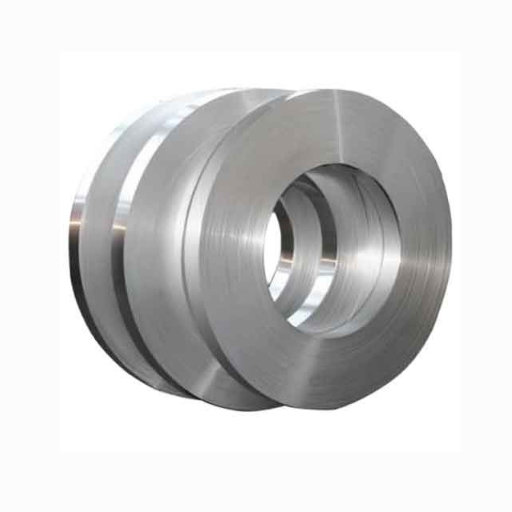
Due to the strong client focus, modern technologies, and high-quality stainless steel strips offered by these firms in the market, some companies have gained recognition as top manufacturers of stainless steel strips.
- Aperam – An innovator in sustainable stainless steel production.
- Nippon Steel Corporation – A household name in precision engineering and a wide cross-section of stainless steel alloys.
- Outokumpu – A world champion in the production of stainless steel strips with superb corrosion resistance.
- Thyssenkrupp – A leader in high-performance stainless steel strips for various industries.
- ATI (Allegheny Technologies Inc.) – A premier US manufacturer of demanding stainless steel.
They understand the technological innovations as well as material quality requirements, which makes trust for these companies with ثابت reins sturdy.
Key Players in the 316L Stainless Steel Coil Market
While emphasizing the important stakeholders of the 316L stainless steel coil market, it is essential to also examine their value, technical capabilities, and industrial relevance. The following summarizes the value along with the technical parameters for these companies:
- Aperam
- Key Technical Parameters: Sells 316L stainless steel coils with thickness control between 0.3mm and 3mm. High corrosion resistance, which is suitable for the marine and chemical processing industries.
- Strengths: Noteworthy achievements in the use of steel and metal towards sustainable development, and known for their Modern Manufacturing Practices.
- Outokumpu
- Key Technical Parameters: 316L coils with weldability of 485 MPa tensile strength and excellent weldability features. Can be provided in various widths and finishes to meet specific requirements.
- Strengths: Custom stainless steel solutions for energy, healthcare, and industrial clients, which have become the focus of attention.
- Thyssenkrupp
- Key Technical Parameters: Highly durable 316L stainless steel coils with surface quality which is visually appealing as well as functional. 0.5mm to 4mm thickness range, for more demanding structural applications.
- Strengths: Well known for advanced research and development efforts, which are designed to increase the performance of the product.
- ATI – Allegheny Technologies Inc.
- Key Technical Parameters: Produces 316L stainless steel coils with exceptionally low-temperature impact and chloride stress corrosion cracking properties. Provides a wide selection of alloy grades for severe service conditions.
- Strengths: Distinguished for providing high-grade stainless steel for strategic requirements for the aerospace and energy sectors.
These companies excel in meeting the demanding market standards for reliability and efficiency, specializing in the production of 316L stainless steel coils for use across different industrial sectors.
Choosing a Reliable Supplier: What to Look For
His 3 years of experience in the field of construction make him an ideal, dependable supplier to consider, but I keep an eye on a few specific things. Foremost, I make sure the supplier practices basic technical skills and has issued quality certifications for maintaining the standard, like ISO 9001. Also, I check his history with seasoned suppliers for performance 316L stainless steel coils for advanced industrial applications like aerospace or energy. Moreover, I assess their willingness to aid in customizing the precise details for unprotected project specifications. Lastly, I go after those with glowing feedback for a good reputation for prompt delivery.
What are the Applications of 316L Stainless Steel Strips?
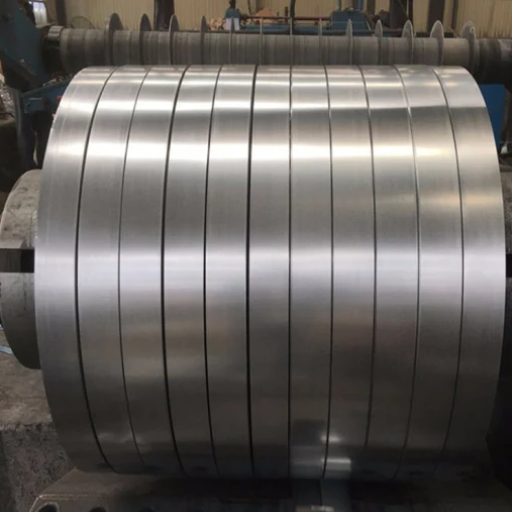
The deadly combination of radiation and corrosive chemicals effectively sterilizes facial medical equipment. Medical professionals use 316L stainless steel strips in surgical blades and implantable devices because of their durability and biocompatibility. They can also be found in Chemical Processing Equipment, Aerospace Structural Components, Marine Hardware, and Oil Exploration Hardware. Their versatility further extends to automotive, energy, and construction applications where high standards are mandatory.
Popular Uses in the Automotive Industry
Novel Safeguard alloys of stainless and specialty steels are important in modern vehicles. They are used in exhaust systems due to their corrosion resistance and ability to endure high temperatures. In electric vehicles, advanced materials contribute to the battery casing, and in the thermal control system, supporting the EV’s efficiency and safety. Their resistive properties make them ideal chassis constituents, suspension systems, and other structural components like chassis frames and engine housings. Innovation keeps sharpening its widespread use throughout the automotive industry.
Role in Construction and Architecture
In my opinion, advanced alloys have unparalleled importance in construction and architecture because of their unique properties such as strength, permanence, corrosion resistance, and malleability. They’re commonly employed in high-performance structural applications such as tower scaffolding, bridgeworks, and building façades, where they need to be safe and aesthetically appealing at the same time. Some alloys, like aluminum and titanium, are both low-density and high-strength, which is great for reducing weight without compromising structural strength. For instance, stainless steel is a common choice due to its resistance to diverse climatic conditions.
In this case, the technical parameters concerning the application of these alloys include the tensile strength (in MPa), rating of corrosion resistance (for example, duration of salt spray test), and a few others such as the coefficient of thermal expansion, which determine the alloy’s response to heating or cooling. For instance, aluminum alloys generally have a tensile strength in the 100 – 400 MPa range coupled with desirable workability and a low density. Because of this combination of factors, advanced alloys can be termed as one of the most flexible and dependable materials in modern engineering construction projects, increasing the opportunity for innovation and sustainable design.
Applications in Marine Environments
Through my research, advanced alloys are often employed in marine applications due to their lightweight properties, remarkable strength, and corrosion resistance. Materials like aluminum alloys are especially used for the construction of ships, offshore platforms, and saltwater-exposed equipment as they reduce maintenance and extend service life. Also, it is reliable and can withstand thermal and mechanical stresses in extreme maritime conditions.
References
- Jainex Steel & Metal – A leading manufacturer, supplier, and exporter of 316L stainless steel strips.
- Gibbs Wire & Steel – Provides 316/316L stainless steel strip coils with detailed specifications.
- SteelPRO Group – A supplier of high-quality 316L stainless steel strips in various shapes and sizes.
Frequently Asked Questions (FAQ)
Q: What is 316L stainless steel, and why is it popular among manufacturers?
A: 316L stainless steel is a low-carbon version of 316 stainless steel, known for its excellent corrosion resistance and high tensile strength. It is popular among manufacturers for its ability to withstand harsh environments, such as marine and chemical settings.
Q: How does 316 stainless steel differ from 304 stainless steel?
A: 316 stainless steel contains more nickel and molybdenum than 304 stainless steel, which enhances its corrosion resistance, particularly against intergranular corrosion and pitting in chloride environments. This makes 316 a preferred choice for applications requiring higher corrosion resistance.
Q: What are the advantages of using stainless steel 316L strips?
A: Stainless steel 316L strips offer high-quality corrosion resistance, durability, and good mechanical properties. These strips are ideal for use in industries such as pharmaceuticals, food processing, and marine applications, where hygiene and resistance to corrosive elements are crucial.
Q: Can you explain the difference between hot rolled and cold rolled stainless steel?
A: Hot rolled stainless steel is processed at high temperatures, making it easier to form and shape, but with a rougher surface finish. Cold rolled stainless steel is processed at room temperature, resulting in a smoother surface, tighter tolerances, and higher tensile strength. Both methods affect the properties and applications of the stainless steel used.
Q: What should I consider when choosing a stainless steel strip manufacturer and supplier?
A: When selecting a stainless steel strip manufacturer and supplier, consider their reputation for providing high-quality materials, their ability to meet specific requirements such as dimensions and finishes, their certifications, and their experience in your industry. A reliable supplier should offer a wide range of products, including 316 stainless steel and other alloys like 430 and 904L.
Q: What are the typical applications of 316L stainless steel strips?
A: 316L stainless steel strips are commonly used in applications that require high corrosion resistance, such as chemical processing equipment, marine environments, medical devices, and food processing machinery. They are also used in the fabrication of stainless steel strip coils and stainless steel sheets.
Q: Why is low carbon content important in 316L stainless steel?
A: The low carbon content in 316L stainless steel helps minimize the risk of carbide precipitation during welding, which can lead to intergranular corrosion. This property makes 316L an excellent choice for welded structures and applications requiring high corrosion resistance.
Q: What is UNS S31603, and how is it related to 316L stainless steel?
A: UNS S31603 is the Unified Numbering System designation for 316L stainless steel. It is used internationally to standardize and identify the chemical composition of this alloy, ensuring consistency and reliability in the manufacturing and supply of stainless steel products.
Q: How is quality stainless steel ensured in manufacturing processes?
A: Quality stainless steel is ensured through rigorous quality control measures, including material testing for chemical composition, mechanical properties, and corrosion resistance. Manufacturers follow industry standards and certifications to ensure the production of high-quality stainless steel products.
Q: What related products might a stainless steel strip manufacturer offer?
A: A stainless steel strip manufacturer may offer a range of related products, including stainless steel sheets, stainless steel plate, stainless steel strip coils, and various alloys such as 201, 301, 304, 410, 420, and 430 stainless steel. These products cater to diverse industrial needs and applications.

